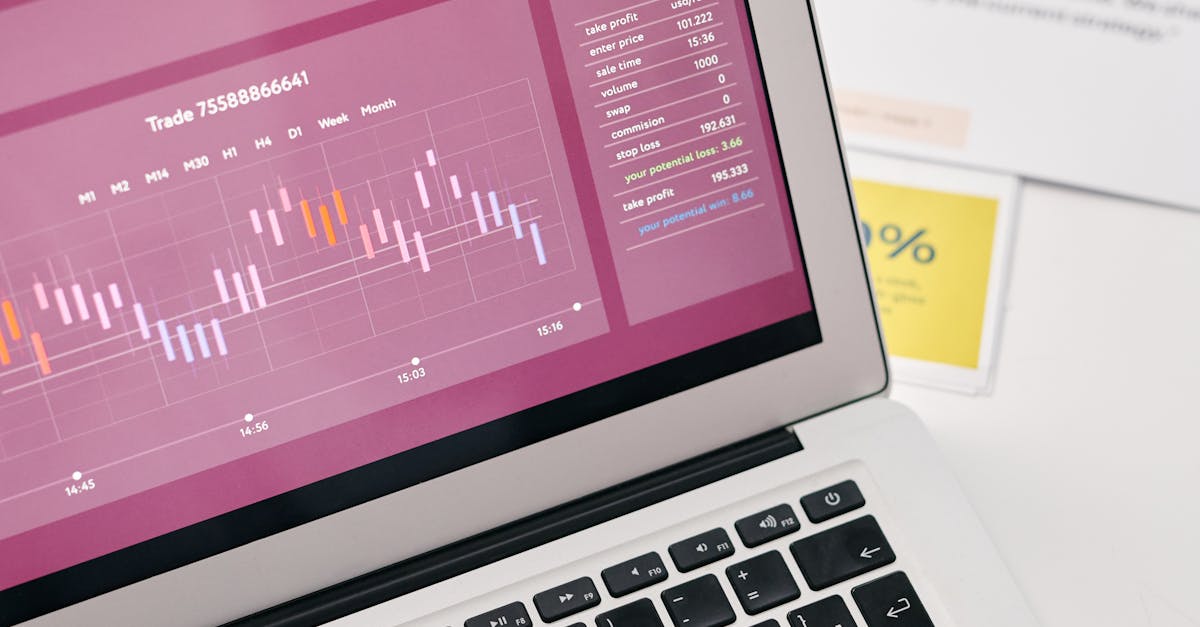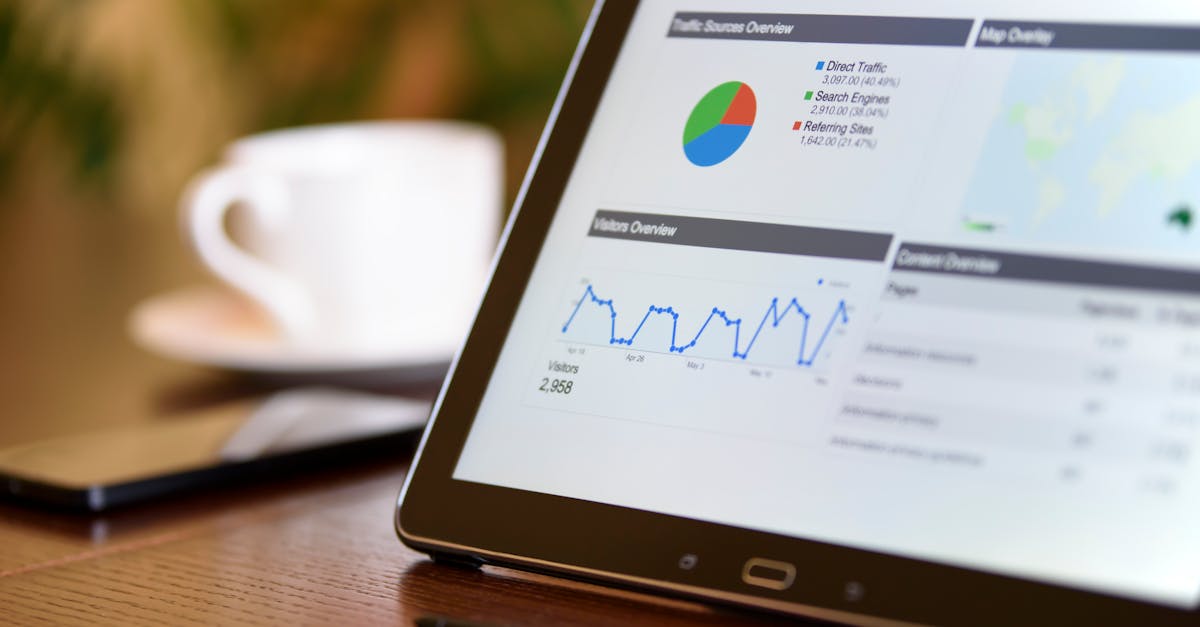
Table Of Contents
Tools and Technologies for RealTime Data Analytics
Real-time data analytics relies on a variety of tools and technologies that facilitate the collection, processing, and visualisation of data as it is generated. Powerful platforms like Apache Kafka and Apache Flink enable organisations to handle vast streams of data efficiently. Cloud-based solutions such as Google Cloud BigQuery and Microsoft Azure Synapse Analytics offer scalability and flexibility. These tools not only ensure that decision-makers have immediate access to critical data but also integrate seamlessly with existing systems to enhance overall functionality.
In the realm of analytics and reporting, organisations are utilising business intelligence tools like Tableau and Power BI to transform raw data into insightful visual representations. These applications support dynamic dashboards that allow users to monitor key performance indicators in real-time. As businesses in Western Australia increasingly recognise the value of instant insights, adopting these advanced tools becomes essential. The ongoing evolution of technology promises to enhance capabilities in analytics and reporting, empowering companies to make data-driven decisions swiftly and effectively.
Key Platforms and Software Solutions
In the landscape of real-time data analytics, several key platforms and software solutions stand out for their effectiveness and adaptability. Tools such as Apache Kafka and Microsoft Azure Stream Analytics provide robust frameworks for handling high-velocity data streams. These platforms facilitate instant data processing, allowing businesses to capture and analyse trends as they unfold. Features like built-in analytics and reporting capabilities enable users to generate insights quickly, helping to drive timely decision-making in various sectors.
Another noteworthy solution is Google Cloud’s BigQuery, which is designed for large-scale data analysis. Its serverless architecture and ability to run complex queries on massive datasets make it a popular choice among organisations in Western Australia. Coupled with advanced analytics and reporting features, BigQuery empowers companies to derive actionable insights from their data in real-time, enhancing operational efficiency and strategic planning. The combination of speed and scalability offered by these tools positions businesses to stay competitive in a rapidly evolving marketplace.
Case Studies of Successful RealTime Data Implementation
Several Western Australian companies have recognised the value of real-time data analytics and successfully integrated these technologies into their operations. For instance, a significant mining corporation implemented a cutting-edge analytics platform to monitor equipment performance in real-time. This approach allowed them to anticipate maintenance needs, reduce downtime, and optimise production efficiency. With detailed Analytics and Reporting tools, management gained insights into daily operations, enabling informed decision-making based on current data trends.
Another notable example comes from the agriculture sector, where a leading farm adopted real-time data analytics to enhance crop management. By leveraging sensors and drones, they collected data on moisture levels, weather conditions, and soil health. This information was processed through advanced analytics software, providing comprehensive Analytics and Reporting capabilities. As a result, the farm could adjust irrigation schedules dynamically and optimise fertiliser application, leading to increased yields and reduced waste. These case studies illustrate the transformative effects of real-time analytics across different industries.
Lessons from Leading Western Australian Companies
Leading companies in Western Australia have embraced real-time data analytics to enhance their operational efficiency and decision-making processes. By integrating advanced analytics and reporting tools into their systems, they have been able to capture and analyse vast amounts of data instantaneously. This implementation has allowed businesses to identify trends and customer preferences quickly, enabling them to adjust their strategies in a dynamic marketplace.
One notable example is a mining company that utilised real-time analytics to monitor equipment performance. By leveraging analytics and reporting, they dramatically reduced downtime and increased productivity. The insights gained from real-time data not only optimised their operations but also provided critical information for risk management and resource allocation, showcasing the profound impact of real-time data analytics in various sectors across the region.
Future Trends in RealTime Data Analytics
The landscape of real-time data analytics is set to evolve significantly as advancements in technology continue to emerge. Innovations in artificial intelligence and machine learning will enhance the capability to process and analyse large datasets instantaneously. This shift allows businesses to derive actionable insights in real-time, improving decision-making processes. Moreover, the integration of cloud-based solutions is expected to provide greater accessibility and collaboration among teams, enabling more streamlined analytics and reporting.
As businesses in Western Australia adapt to these changes, the demand for skilled professionals in this field will rise. Organisations will need to invest in training and development to keep pace with the evolving tools and methodologies. Moreover, the role of data privacy and security will become increasingly paramount. Companies must ensure their analytics and reporting processes comply with regulations while maintaining the integrity of sensitive information. This focus will shape the future of real-time data analytics, driving innovation and building trust among consumers and businesses alike.
Predictions and Innovations for the Coming Years
The future of real-time data analytics in Western Australia promises to be transformative, driven by advancements in machine learning and artificial intelligence. These technologies will enable businesses to process vast amounts of data more efficiently, unlocking insights that were previously difficult to obtain. As organisations increasingly adopt these tools, the integration of analytics and reporting will become seamless, allowing for quicker decision-making and enhanced operational performance.
Moreover, the growing importance of data privacy and security will shape how companies approach real-time analytics. Compliance with regulations will necessitate that firms adopt more robust data governance frameworks. Innovations in data encryption and secure cloud solutions will be essential for maintaining trust while leveraging analytics and reporting capacities. The focus on sustainable practices will likely lead to more environmentally conscious data management strategies, showcasing a commitment to responsible analytics in future business models.
FAQS
What is real-time data analytics?
Real-time data analytics refers to the immediate processing and analysis of data as it is generated, allowing organisations to make timely decisions based on the latest information.
How can real-time data analytics benefit businesses in Western Australia?
Businesses in Western Australia can leverage real-time data analytics to improve operational efficiency, enhance customer experiences, and make informed decisions that drive growth and competitiveness.
What tools and technologies are commonly used for real-time data analytics?
Common tools and technologies for real-time data analytics include platforms like Apache Kafka, Microsoft Power BI, Tableau, and various cloud-based solutions that support data integration and visualisation.
Can you provide examples of successful real-time data implementation in Western Australian companies?
Yes, several companies in Western Australia have successfully implemented real-time data analytics, such as mining companies using real-time data for resource management and retailers enhancing inventory management and customer insights.
What are some future trends we can expect in real-time data analytics?
Future trends in real-time data analytics may include increased use of artificial intelligence and machine learning, advancements in edge computing, and more robust data visualisation tools to help organisations derive insights quickly and effectively.

















































